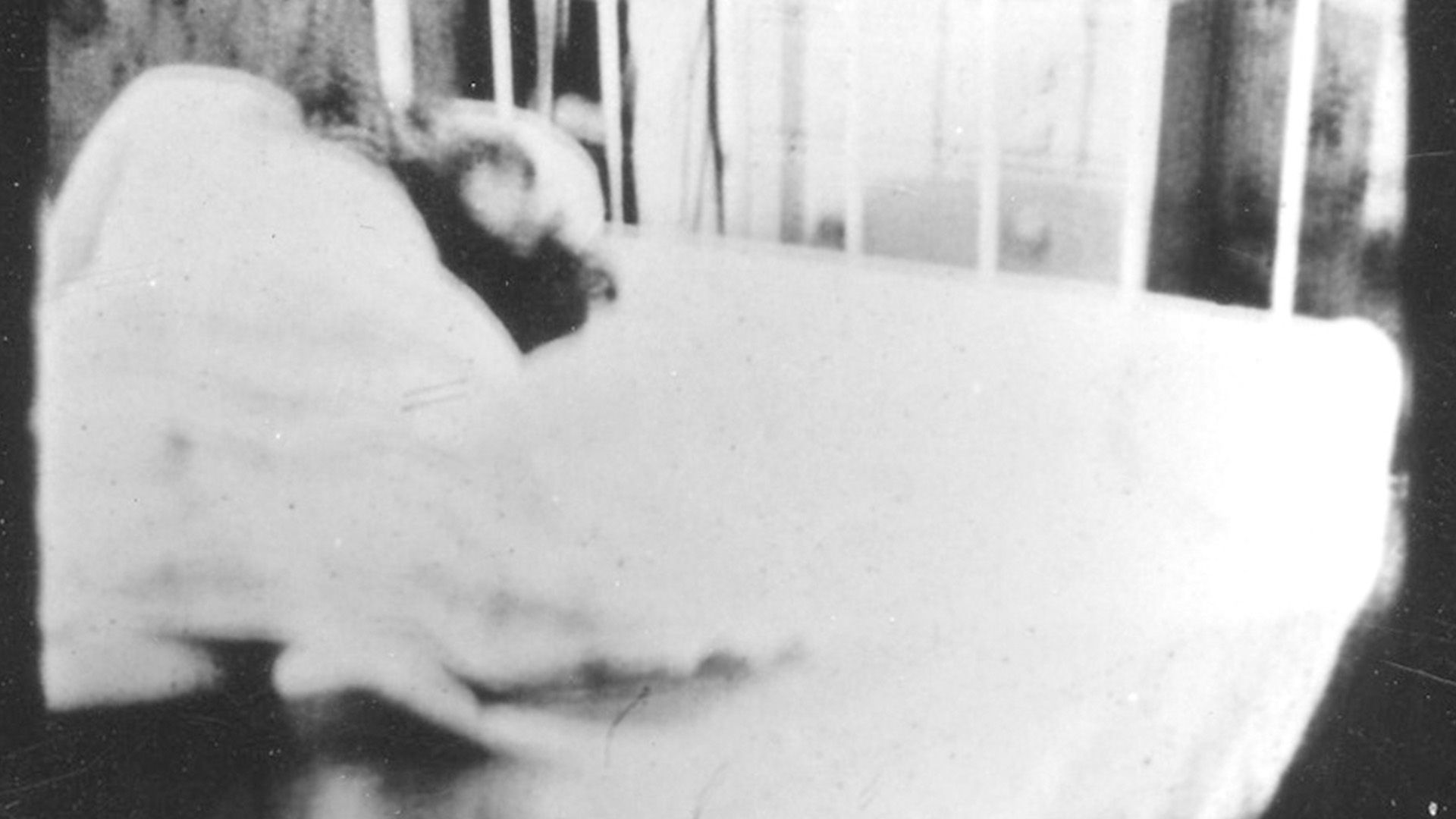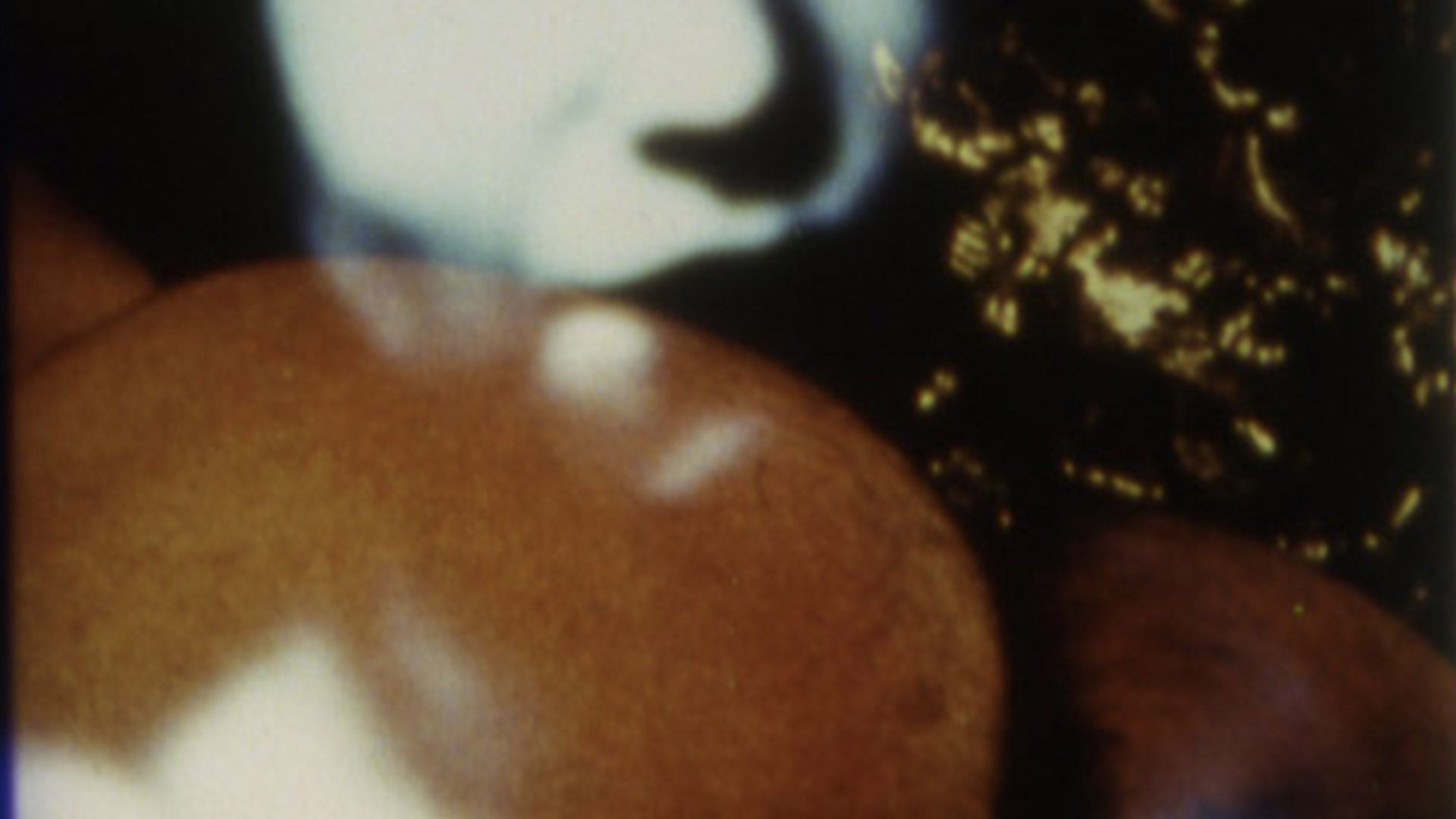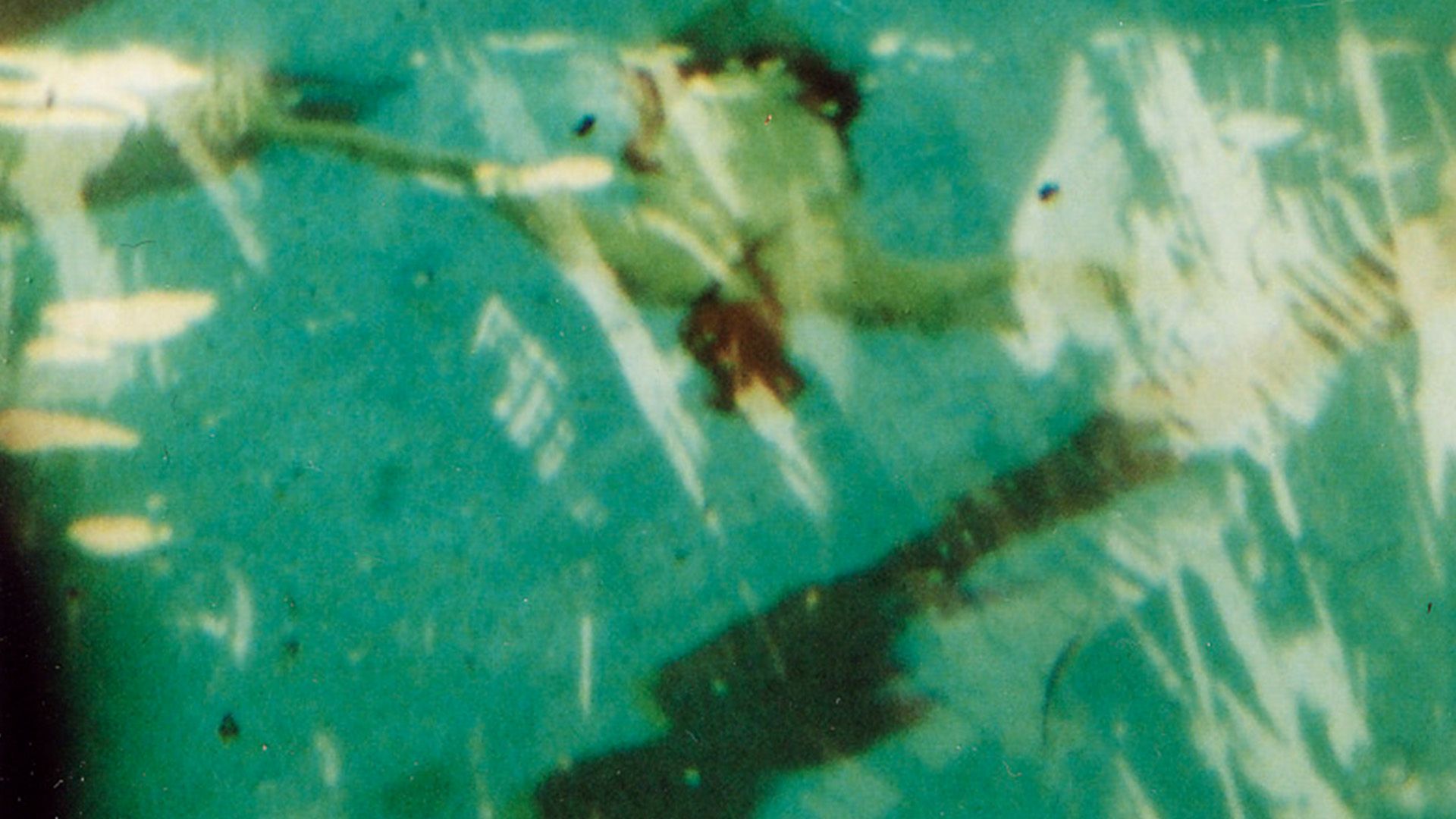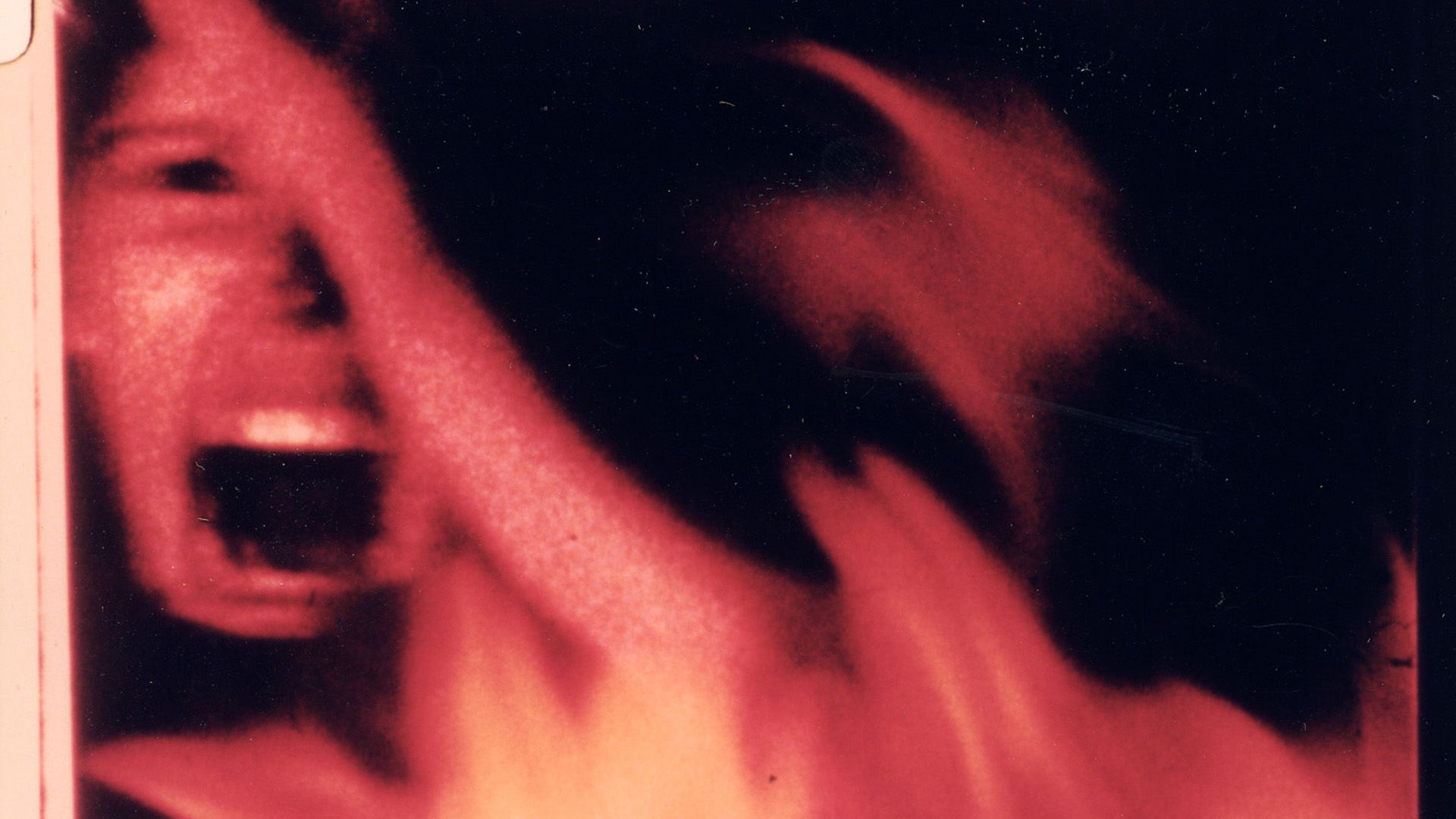BARBARA STERNBERG
PROGRAMME 1
Filmoteca de Galicia | Thursday June 1st | 7:30 p.m. | Free entry to all venues until full capacity. It will not be possible to enter the venues after the screening has started.

TRANSITIONS
Barbara Sternberg, 1982, Canada, 16mm, 10 min.
Transitions is a film of inner life and speaks of time, reality, power. It depicts the disquieting sensations of being in-between falling asleep and being awake, between here and there, between being and non-being. These metaphysical themes are evoked by the central image of a woman in white over which layers of images and sound (voices) are superimposed. (Barbara Sternberg)

BEGINNING & ENDING
Barbara Sternberg, 2008, Canada, 16mm, 7 min.
In this short, silent, black and white and colour film, images flutter and flicker in orgasmic rhythms. Visual references to Bataille’s “solar anus”, to romantic coupling, to monkeys and man are held in contact within the sustaining dichotomy of beginnings and endings.

SURFACING
Barbara Sternberg, 2004, Canada, 16mm, 10 min.
Our busy comings and goings, on the move, working at life are pictured, but layers of images and scratched emulsion make viewing through the depths an effort. If we scratch the surface, however… Glimpses of other states suggest we can surface.
“The world is too much with us; late and soon, / Getting and spending, we lay waste our powers…” W. Wordsworth

BEATING
Barbara Sternberg, 1995, Canada, 16mm, 63 min.
“Beating” — to get beaten or give a beating, to beat oneself up. To beat the odds. Metal is forged by beating. Birds beat their wings, the sun beats down, and our hearts… Under this central trope of ‘beating’, with its combined negative and positive implications, the film brings together the individual personally lived and the communal, historic perspective; hatred and forgiveness; laughing and crying. Also brought in relation: the politics of gender and the holocaust; the Old World and North America. Passages of emotion –our lives as we experience them today– move through a terrain of memory and analysis.
Beating exists in the area of boundaries. I work with images as they can be registered between abstraction and representation, between blurred and defined, between the formless and the formed in-between, in motion. I try to render images suggestively, bodily and to use vocalizations and words for texture as well as information. “Water, like fire, is a dimension of the carnival insisting on the stateless and the flux… a world in which hierarchies were collapsing, boundaries dissolving… a state of becoming, not of being.” (Robert Kroetsch). The film’s surface, scratched and mottled, negative and positive, black & white and colour bears witness to storms of emotion. From section to section, repetitions occur, connections are made—reminiscences, equivalences between different images—to achieve the feeling or recognition that everything is related. It is all there all the time. (Barbara Sternberg)
BARBARA STERNBERG
IN DEPTH
On watching Barbara Sternberg’s films, one has the curious sensation that the frame is no longer a flat surface, but a kind of infinite portal, as if we were contemplating the start of a tunnel that we know contains a thousand and one layers of depth progressively emerging from the darkness. This is something that the images not only suggest due to their plastic complexity piling on layers upon layers like an oil painting full of glazes and maskings, but which also has to do with the wealth of meanings these images summon up (more as a means of inquiry than a proposal of axioms) and—in her films with sound—with how what we hear adds new planes to what we are seeing on the screen. Overlays abound in her work, and they do not arise so much from spontaneity, but from the sought-after clash of meanings and graphic patterns, the almost obsessive work with certain recurring images, worked and reworked, the rhythmic patterns of shaking movement that is sometimes vital, sometimes brazen. A torrent of ideas pours forth with each step, and that torrent in turn lends shape to equally overflowing and overwhelming images that spread throughout a prolific body of work.
Attempting to compress this universe into two programmes is therefore impossible. So, setting out with that impossibility in mind, we thought that at least a point of access could be provided to the depths that her work suggests. Barbara Sternberg, a native of Toronto, Ontario, began making films in the mid-1970s, with a clear interest in lending visibility through film to what is not naturally visible, or what words cannot capture. In works such as her Opus 40 (1979), she reflects upon the alienating repetition of factory life by using the possibilities of the medium (photochemical) to the utmost. This is perhaps one of the maxims of her work: exploring the possibilities of cinema as a material with all kinds of techniques, and for this exploration to go beyond the visual, to be in line with research into how we experience the world, visually, emotionally and intellectually. In other words, form and content are the same thing.
The first programme we are dedicating to her is strung together by a somewhat existential restlessness, by the expression of restlessness, by the fleeting nature of life and its repeating cycles, by the expression of trauma and wounds. Transitions, the piece with which the selection begins, is the expression of a woman’s subjectivity; troubled, unable to get to sleep and, from what the overlays and repetitions suggest, to “switch off” her brain for even a minute. The past in the form of recurring memories and the future in the form of uncertain yearnings seem to haunt her; they clash in the image, while on the soundtrack two whispering voices intermingle in two different lines of thought. Beginning & Ending, for its part, deals with another cyclical theme: sex, with its animal side, through fleeting images, at times close to abstraction, evoking sensory agitation and conveying tactility. Texture is precisely one of the strong points of Surfacing, which reflects Sternberg’s work with emulsion, and which occurs to us through the intimacy of Transitions, a unitary subjectivity, or that of Beginning & Ending, shared inwardly, publicly, in images of passers-by making their way through intricate layers of emulsion. Little by little we are returning through film to a certain communion with nature and with one’s own being. Beating, perhaps one of Sternberg’s most impressive and complex works, is part of a semantic game with the word “beating”, which can refer to violence, meaning “to hit”, and to the beating of the heart or the beating of a bird’s wings. Based on this idea, Sternberg constructs a film that deals with issues such as the Holocaust, colonisation, fascism and its similarity to male chauvinism; but also everyday violence, aggressiveness, pain and individual trauma. The associations between images, which are subjected to all kinds of processes—alternating between positive and negative, refilming, working directly on the strip of film by scratching or fading its colours, tinting, quick editing, overlays and more—are the root to the almost subliminal strength with which the film works. Street images, vehement gestures, birds in flight, a woman swimming (a recurring image in her films), fragmented parts of the body, photographs and videos re-filmed, fast and agitated sweeps and more all make up the film’s imagery. This visceral nature is accompanied by the soundtrack (and sometimes also the text on the screen) in which, in addition to quoting texts by Virginia Wolf, Hélène Cixous, Hanna Arendt, Dorothy Dinnerstein, Sylvia Plath and others, Sternberg also uses human sounds that put one’s hair on end: grunts, cries, wails (and it takes us a while to discern if they are gasps of pleasure, sobbing or exhaustion). It is a beautiful yet brutal film, which seems to affect us even physically (some flickering parts contribute to this) and which connects us to the shadows of the human condition.
In a more soothing tone, programme number two revolves around colour, which is one of the key drives behind Sternberg’s thinking on film, but which, as we shall see, also harbours philosophical connotations. Colour Theory is set out as a miniature treatise on colour theories to kick off the session. This is followed by one of Sternberg’s most recent films, Sunprints 1, 2, 3. Literally, this is the result of the sun acting directly on the celluloid strip, combined with the sun on different landscapes, in a line of research that continues the one in other recent films such as Untitled #1 (sun vision), which seem to move in the direction of considering the sun as the factor that colours the world with its action on things, and through the seasons. Finally, the feature film Midst also moves in that direction of the passing of time and of the changes reflected by light and colour gradients, linked by a reflection on human beings’ affective ties between each other and with nature, and also on memory and presence, in a film whose editing is structured through colour. Painting also seems to be one of the drives behind the film, whose lyrical roots are also expressed in Sternberg’s inspiration in works such as The Waves by Woolf, and in the writer’s personal mark, that stream of consciousness that attempts to capture the precise perception of each moment.
We cannot end without also remarking on another aspect that lends depth to Sternberg’s work, which is her multifaceted involvement in cinema. In addition to addressing other expressive media such as performance, installation and video, Sternberg has worked as a lecturer and in various organisations and events to disseminate cinema (which she has even founded), and has also written about artists and filmmakers.
Elena Duque
